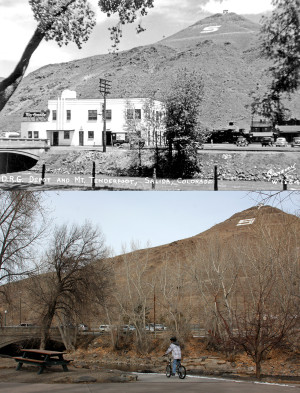By Patty LaTaille
Severe Drought
SLV residents experienced the second worst drought year on record for Colorado since 1895. 2012 was right up there with recorded extremely dry years at the height of the Dust Bowl.
The U.S. Drought Monitor currently shows all of Colorado under dry conditions, with the eastern plains under extreme or exceptional drought conditions. Only Mineral county differs from all the rest of the San Luis Valley counties, experiencing severe drought, but not extreme or exceptional.
This drought is expected to last at least through the spring, with temperatures above average and precipitation below average. The economic impacts of drought are being tracked in order to receive mitigation funds for the state.
Economic survival is of major concern across the broader San Luis Valley (since it’s an area that is considered among the poorest in Colorado), and residents are bracing for a major economic hit.
According to The Denver Post, Colorado agriculture commissioner John Salazar recently told residents, “Agriculture alone cannot sustain the economy of the San Luis Valley.” To avoid state shutdowns of wells – which happened in 2009 in northeastern Colorado – commercial farmers are proposing to pay to pump or purchase new surface-water rights and to use these to offset pumping from the Valley’s deep yet rapidly depleting aquifers. This may help conserve water, yet the increased cost may cause 80,000 irrigated acres to cease production.
The time has come for commercial farms “to pay for the impacts they are causing to the river,” said Steve Vandiver, manager of the Rio Grande Water Conservation District and the leader of efforts to find water to replace water pumped from wells.
Farmers count only on the Sangre de Cristo snowpack to keep creek water flowing into gravity-based “acequia” ditches. As The Denver Post notes, the communal People’s Ditch system in San Pablo, San Luis and neighboring Spanish land-grant communities, which dates to 1852, increasingly serves as a model of prudent agriculture. “It’s all about efficiency, giving your crops just what they need and then sharing the water with everybody else,” said Cerro Ditch Co. president Joseph Lobato.
Interior Secretary Ken Salazar calls it “a perfect example of an important part of history that needs to be preserved.” Coloradans “ought to treat every drop of water as if it’s our last” and study efficiencies of similar systems, Gov. John Hickenlooper noted.
Record Cold Temps in the SLV
Snow would have been a welcome visitor in January, as many SLV residents worked hard to stay warm and mobile during one of the coldest months in 30 years. Way below freezing temperatures caused many pipes to burst, did damage to water lines, made vehicles refuse to start, and sent heating costs soaring. Starting on New Year’s Day, every day but one – until January 18 – had temperatures at or below 0 degrees, and on a few days, the thermometer did not even reach 10 degrees. Even with the strong sun shining, the Valley remained in a deep freeze, with nighttime temps down to minus 27 degrees and regularly below zero. Welcome to winter in the Valley, where zero degrees seems almost … tropical.
Voting Issues Continue in Saguache County
A Help America Vote Act (HAVA) complaint has been filed against the Saguache County Clerk and Recorder’s office related to the November 2012 election. Local voting activist Lisa Cyriacks and Aspen-area resident Marilyn Marks, from the Citizen’s Center, filed a complaint with the Colorado Secretary of State (SOS).
The main issue appears to be an inaccuracy in the election results posted by County Clerk Carla Gomez in three races. The race for the state congressional seat sought by Sal Pace was the impetus of concern to Cyriacks, who requested the tapes from the Election Systems and Software (ES&S) by referencing the Colorado Open Records Act (CORA). This ES&S M100 model Precinct Optical Scanner was used to count the ballots following the Nov. 1, 2012 election. Cyriack filed the complaint after an examination of M-100 machine tapes from Nov. 6 and Nov. 14 showed apparent discrepancies in the vote tabulation.
According to The Crestone Eagle, Cyriack explained, “The Help America Vote Act is a key piece of federal law in standardizing how elections are tabulated and how the results are reported. The SOS, as the chief election official in the state, is required to uphold these standards in all elections under his purview and (to see) that all ‘voting systems’ comply with these standards.”
Voters await the outcome of the secretary of state’s investigation to find out more details from the county clerk. It appears that running elections according to new HAVA guidelines while adhering to budget constraints in small rural counties can be challenging.



